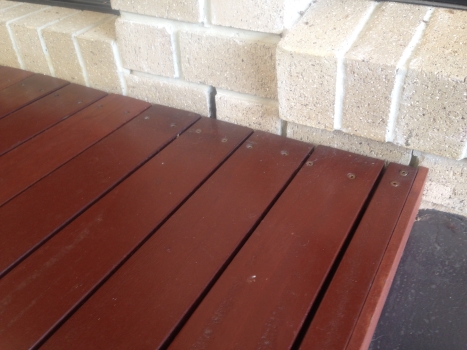Timber Pest Management
Thermal Camera’s
Our experiences have shown that the use of Thermal Cameras when carrying out timber pest inspections have limited, and almost no benefit whatsoever, in terms of identifying active termites within a structure and are completely ineffective in trying to determine any past damage. Thermal Camera temperature readings of around 27-32 degrees and colour changes visible on the camera screen can be an indicator of active and current termite activity within the area being screened. Despite this, we have carried out many inspections where the consultant has identified active termites in an area, through the use of good and thorough inspection practices, and applying his knowledge and experience to the inspection process, yet when the camera was then directed at the known area of current termite activity absolutely no change at all was noted on the screen.
Thermal Cameras are not designed to pick up individual and smaller collections of foraging termites in concealed areas within a structure – despite some ridiculous claims made by operators within the industry. They also DO NOT identify inactive termite workings within a structure and we believe this is the most important aspect of a Timber Pest Inspection when dealing with termite issues.
The camera is particularly ineffective (useless) on warm or hotter days, as is the case mostly for Brisbane’s climatic environment. Active termites are known to maintain a constant temperature range within their workings of around the mid to late 20 degrees to early thirty degrees. For thermal cameras to have any chance whatsoever of detecting any termites there would need to be a mass of termites collected in one area (for example a nest site in a wall/floor cavity) as thermal cameras are designed to pick up temperature variances on surface materials. The temperature would also need to be lower than 26-27 degrees for any chance of the camera to detect a temperature difference however if the termite workings were 28 degrees and the temperature on the day was also 28 or higher, it would also negate the camera’s ability severely, as the temperatures between the two are so close.
This renders the camera almost completely useless for 10 months of the year in Brisbane, as the temperature is constantly around the mid to late 20’s – the same zone as active termite workings. Ideally a difference of at least 8 degrees between the termite workings and temperature on the day is required for the camera to have any chance of being effective.
As thermal cameras can pick up larger temperature differences in some areas and surfaces, we have however found them to be extremely useful when trying to identify leakages that are not visually present but are able to be identified by the thermal camera. These would mostly involve roof leaks and leaks present in wall and floor cavities e.g. adjacent or below shower/wet areas.








 All too often during our inspections we identify areas which are conducive to the collection of retained ground moisture near a structure. Elevated moisture levels are known to provide conditions favourable to Timber Pest activity, particularly termites, and it is vital that every effort be made to avoid these risks. The most common causes of retained ground moisture are inadequate surface water drainage, downpipes not connected to drainage outlets, no gutters in place for roofing areas, outlet pipes for air conditioners, relief and overflow valves for hot water cylinders, corroding and join leakages of gutters and downpipes, defective or incomplete flashing and plumbing for rainwater tanks leaking. These are all issues which can be, and should be rectified, if they are in existence at a property.
All too often during our inspections we identify areas which are conducive to the collection of retained ground moisture near a structure. Elevated moisture levels are known to provide conditions favourable to Timber Pest activity, particularly termites, and it is vital that every effort be made to avoid these risks. The most common causes of retained ground moisture are inadequate surface water drainage, downpipes not connected to drainage outlets, no gutters in place for roofing areas, outlet pipes for air conditioners, relief and overflow valves for hot water cylinders, corroding and join leakages of gutters and downpipes, defective or incomplete flashing and plumbing for rainwater tanks leaking. These are all issues which can be, and should be rectified, if they are in existence at a property.






